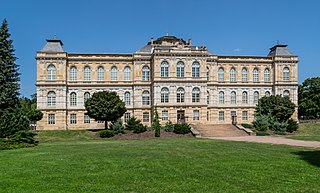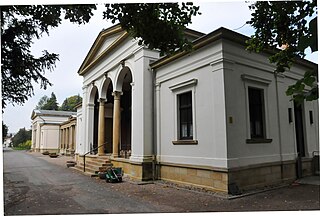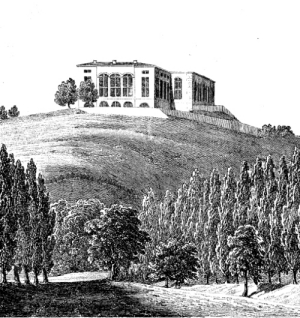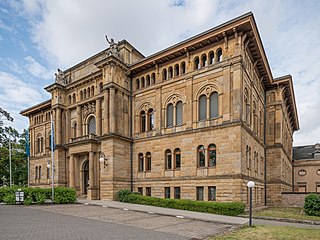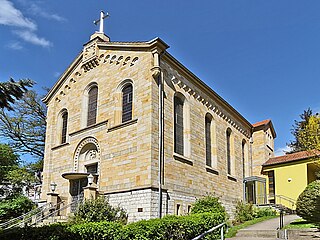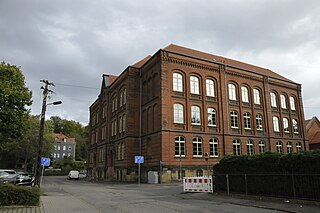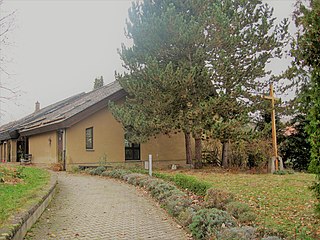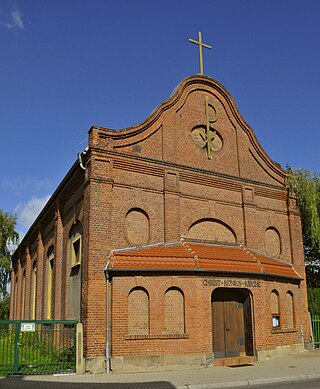17 Sights in Gotha, Germany (with Map and Images)
Legend
Welcome to your journey through the most beautiful sights in Gotha, Germany! Whether you want to discover the city's historical treasures or experience its modern highlights, you'll find everything your heart desires here. Be inspired by our selection and plan your unforgettable adventure in Gotha. Dive into the diversity of this fascinating city and discover everything it has to offer.
Sightseeing Tours in Gotha1. Herzogliches Museum Gotha
The Ducal Museum Gotha, located in the castle park south of Friedenstein Castle, is a museum building in the neo-Renaissance style from the 19th century. Since its reopening in 2013, it has been showing the art collection of the Dukes of Saxe-Gotha with Egyptian and Greco-Roman antiquities, Renaissance paintings, East Asian art from China and Japan, and sculptures from different eras. A masterpiece of the exhibition is the Gotha Lovers, a painting from 1480.
2. Neue Sternwarte
The Gotha Observatory was a ducal foundation for the purpose of astronomical research. It consisted of several research facilities in the city of Gotha, including the building in Jägerstraße, the street façade of which is shown in the accompanying photo.
3. Am Schmalen Rain
The garden city settlement "Am schmalen Rain" in Gotha's south is an example of the cooperative housing construction of the 1920s, which was influenced by the early garden city movement. The horseshoe-shaped settlement takes its name from its entrance street, which in turn was named after an old field name.
4. Hauptfriedhof
The 20-hectare main cemetery in Gotha is the last of the former five Gotha cemeteries still in operation. It is located on Langensalzaer Straße in the northeast of the Thuringian city. The crematorium from 1878 located here is the oldest in Germany.
5. Gedenkstein Bahnhof Leinakanal
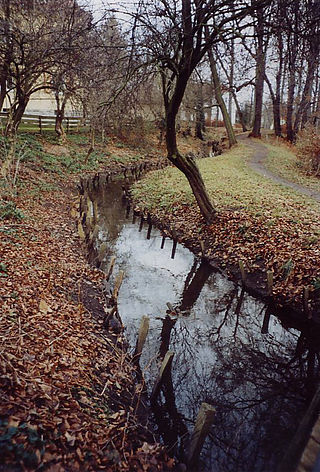
The Leina Canal is a medieval artificial watercourse that was created to supply the arid city of Gotha. The technical monument still transports water from the Thuringian Forest over almost 30 km to Gotha.
6. Winterpalais
The Winter Palace in Gotha, Friedrichstraße 2, was a classicist city palace built mainly in 1822 and an important cultural monument. It was largely demolished in 2010 and replaced by a new building completed in 2014.
7. Gymnasium Ernestinum
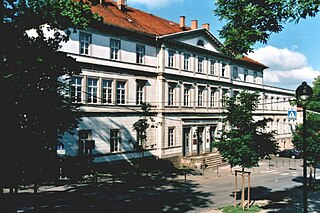
The Ernestine Gymnasium is a humanistic and modern gymnasium in Gotha, Germany, the successor of the Illustrious Gymnasium, founded in 1524, which in 1853 was merged with the recently founded Real-Gymnasium Ernestinum, named in honour of Ernest I, Duke of Saxe-Coburg and Gotha. The merged school continued to be known as the Ernestinum. Until 1947, when it was closed, it was considered the oldest gymnasium in the German-speaking world. It was re-founded in 1991, shortly after German reunification.
8. Ekhof Theater

The Ekhof Theater is one of the oldest baroque theater with a functional stage machinery from the 17th century, which is still operated manually today. It is located in the west tower of Schloss Friedenstein in Gotha.
9. Prinzenpalais
The Prinzenpalais is an early classicist villa at Mozartstraße 1 in Gotha, Germany. It was built in 1776 and is thus one of the earliest buildings of classicism in Germany, along with Wörlitz Castle near Dessau (1769–1773) and the Friedericianum in Kassel (1769–1785). After many years of vacancy, the ensemble, consisting of the Prinzenpalais and Kavaliershaus, was bought by AWO AJS gGmbH. While the Prince's Palace was being rebuilt and extensively restored, the Cavalier House and the gallery were demolished in protest. Since 6 August 2018, two side extensions with flat roofs have completed the building.
10. Alte Sternwarte
Gotha Observatory was a German astronomical observatory located on Seeberg hill near Gotha, Thuringia, Germany. Initially the observatory was dedicated to astrometry, geodetic and meteorological observation and tracking the time.
11. Deutsches Versicherungsmuseum
The German Insurance Museum Ernst Wilhelm Arnoldi is a museum of insurance history in Gotha, Thuringia, Germany. It is based at Bahnhofstraße 3a, in the former management building of the Gothaer Lebensversicherungsbank. It is operated on behalf of the city of Gotha by the Friends of the Insurance Museum of the same name.
Wikipedia: Deutsches Versicherungsmuseum Ernst Wilhelm Arnoldi (DE), Website
12. St. Bonifatius
The Roman Catholic parish church of St. Boniface is located in Gotha in the Thuringian district of Gotha. It is the parish church of the parish of St. Bonifatius Gotha in the deanery of Meiningen in the Diocese of Erfurt. It bears the patronage of St. Boniface.
13. St. Johannes
St. John's Church is an Evangelical Lutheran parish church in Uelleben, a district of Gotha in Thuringia, Germany. It was built in the 17th century, belongs to the Gotha Superintendence and is located in the centre of the village.
14. Grundschule “Josias Friedrich Löffler”
The Staatliche Grundschule "Josias Friedrich Löffler" is a primary school in Gotha, Germany. The schoolhouse, which is a listed building, was built in 1892 and expanded in 1894 to include a gymnasium. The school initially bore the name of Josias Friedrich Löffler and then served as a vocational school from 1959, then named after Käthe Kollwitz. In 1991, the building became a primary school again, which since 1992 has again borne Löffler's name.
15. Reyherschule
The Staatliche Regelschule "Andreas Reyher" is a regular school in Gotha. The listed building of the school was built in 1900 as a civic school for boys and girls. The school has always borne the name of the pedagogue Andreas Reyher, who organised the Gotha school system in the 17th century, although the organisational form of the school changed several times. Currently, the building houses a state regular school and a state primary school, which bear Reyher's name.
16. Versöhnungskirche
The Church of Reconciliation is a community center of the Evangelical Church in Central Germany in Gotha. The church building in the West district at Werner-Sylten-Straße 1 is a functional building for church services and congregational work, it was inaugurated in 1985.
17. Christkönigskirche
The Church of Christ the King, also known as the Church of Christ the King of the Precious Blood, was the second church, after the Church of St. Boniface, the Roman Catholic parish in Gotha, which belongs to the parish of St. Boniface Gotha. In 2019, it was sold to the Romanian Orthodox Church.
Share
How likely are you to recommend us?
Disclaimer Please be aware of your surroundings and do not enter private property. We are not liable for any damages that occur during the tours.
